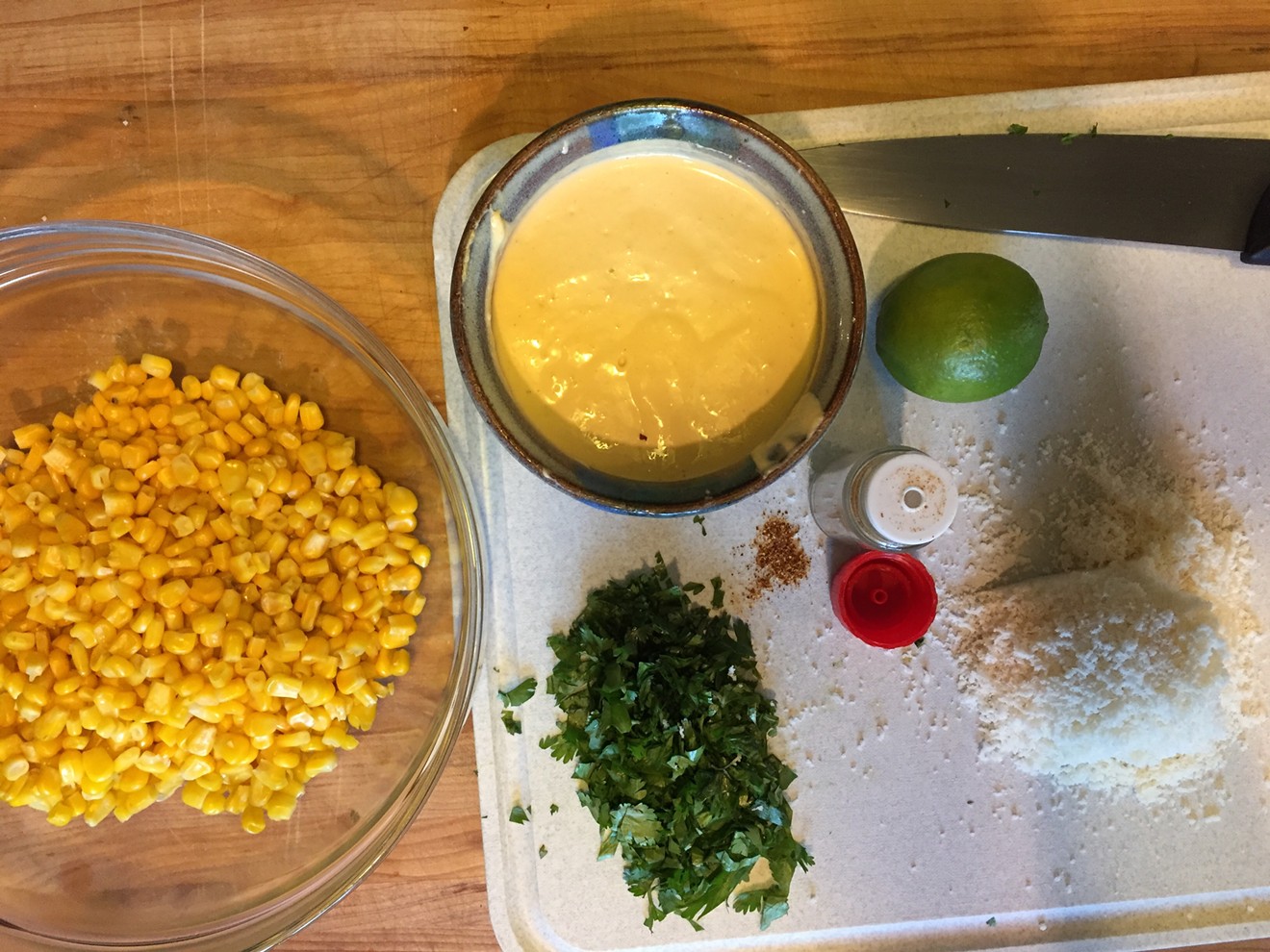Over the years, I've adopted many coping strategies. Sometimes I default to something simple and seemingly foolproof like beer. Or something boring and absolutely foolproof, like paper plates (the planet be damned, you can never have enough paper plates at a summer cookout or pool party). Lately, though, I've settled on a new plan for nearly certain summer potluck success. Conveniently, it doubles as an easy summer side standby, party or no.
What is this magical answer?
Corn.
I grew up in Indiana corn country, but this isn't your ordinary "straight from the stalk, maybe with a bit of salt" corn. Esquites. Elotes. Mexican street corn. It has a few names, and a few formats, and I am (very, very) far from the first person to suggest it as a delicious and user-friendly summer side dish, but it's one I don't see nearly enough of outside of festivals and refresquerias.
Fundamentally, the difference between the primary groups elotes and esquites is one of format. On-ear, and you're eating elotes. Kernels in a cup, it's esquites. They are more or less the same thing, as far as I'm concerned, and both revolve around a format of easy customization. Corn, either boiled or grilled/roasted. Something tangy. Something creamy. Something cheesy and a little funky. Something spicy. You can go from there, mixing and matching to suit your predilections. A standard might go: grilled corn + mayo (often with lime) + cheese (aged cotija is a standard) + chile powder. Shave the kernels in a cup, add all of the above plus an optional dash or two of hot sauce and a handful of cilantro, if you're feeling frisky.
I've been playing around with the basics this summer, both on and off the cob. While I usually start with a base of grilled corn (the char really adds a lot of character), I've taken to shortcutting things with steamable packages of frozen corn. As is often the case with frozen vegetables, the kernels are often more plump and flavorful than their fresh counterparts, having been picked and flash-frozen at their peak rather than picked and packed for optimal transport-hardiness. That, and the fact that a package of frozen corn and a few pantry staples are the only things separating you from legitimately good esquites in pretty much as long as it takes you to follow the instructions on a bag of frozen vegetables.
The last go-round, I upped the ante, doubling up on the corn. Instead of straight mayo, I made esquites mayonnaise and used that in my esquites, for one of my best (and easiest) versions yet. I call it Esquites Squared.

Steamed corn, "Esquites Mayo," Togarashi, Parmigiana, lime. A dash of hot sauce to taste, and you've got a party.
Photo by Nicholas L. Hall
12 oz. frozen corn, thawed
1/4 - 1/2 cup mayonnaise (recommend Kewpie brand)
2 T Valentina brand hot sauce, or to taste
Combine all ingredients in blender. Blend until smooth.
You may need to adjust the texture with more mayonnaise, depending on your preference and the starch and water content of your corn.
For Esquites Squared:
One 19 oz. bag of steamable frozen corn (this is a guideline)
1/2 to 1 cup of Esquites Mayo (regular mayo works perfectly)
1/2 to 1 cup of grated aged cheese (cotija, but parmigiana works in a pinch)
1/2 to 1 cup chopped cilantro
1 tsp chile powder or similar (I used homemade sichimi togarashi)
Juice of 1 lime, to taste
Hot sauce, to taste (I recommend Valentina black label, served tableside)
Prepare corn according to package directions. Open bag carefully and drain any residual liquid. Empty corn into a bowl more than large enough to hold it, add remaining ingredients (aside from hot sauce) and toss to combine. Adjust any/all of the ingredient quantities to suit your taste.
As you can see, this is more a format than a recipe. Which is kind of the point. The day I made this, I went with what I had. Parmigiana instead of cotija because I didn't have the latter. Togarashi because I found it before the chile de arbol I was looking for. "Esquites Mayo" because I'd made it for a different project (corn fritters, sort of), and it seemed like a good idea. It was.
As much of a dish of opportunity as this was, it wound up being one of the best versions of esquites I've ever made. It's not strictly traditional, but each swap made sense within the format. The esquites mayo worked particularly well, adding a boost of fresh sweet corn flavor that boosted the flavors in the final product. It's worth doing. It is far from essential.
Next time you fire up the grill, throw a few ears on for elotes. Next time you're invited over while someone else fires up his, consider putting together a bowlful of esquites. It's delicious and summer-perfect, easy if you want it to be, and a sure standout amidst the throngs of potato salad and paper plate-bearing masses. Marco. Polo. Perfect.







